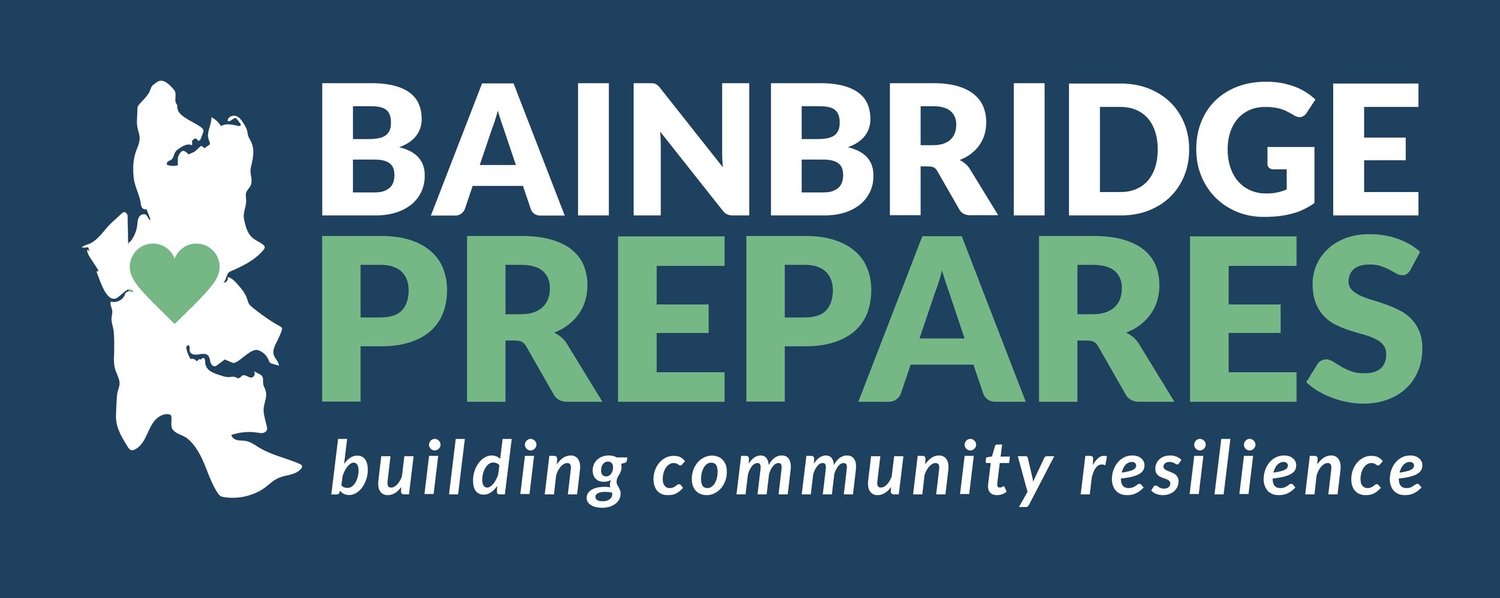Welcome to Volcano Awareness Month
May is Volcano Awareness Month in Washington State. It is also the 43rd anniversary of the eruption of Mt St. Helen's. The proclamation issued by Governor Inslee warns that "The people of our state should become familiar with volcano hazards in their communities, become two weeks ready for any disaster, and have awareness of evacuation routes in order to prepare to respond effectively.”
Although Washington has five active volcanoes, on Bainbridge Island our biggest concern would be falling ash. Typically, winds blow west to east, which would take ash away from the island. However, we Washingtonians like to recreate outdoors, and many people frequently visit or drive through the Cascades, so it behooves all of us to understand the dangers of volcanoes. Lava and debris can move at speeds up to 100 mph, destroying everything in their way.
The eruption of Mt. St. Helen's on May 18, 1980, was preceded by alternating periods of quiet and activity. Brian Terbush, volcano program coordinator for the Washington Emergency Management Division, said that, as a result, "the public was confused why the area around it was closed." He added, "we need to trust and believe in our scientists and give them the tools they need to succeed."
Preparation
You can sign up for a free service called the Volcano Notification Service (VNS) that sends notifications about volcanic activity.
Create evacuation, shelter in place, and communication plans with your family.
As with all emergencies, make sure you have the necessary supplies to survive in place for three weeks or to evacuate to safety.
Response
If a volcano erupts near you,
Heed the evacuation orders issued by authorities so that you may avoid mudflows, flying debris, lava flow, hot gases, and the dangers of a lateral blast.
Help neighbors with special needs who may need assistance evacuating.
Stay away from valleys and other low areas.
Be careful crossing rivers: Mudflows can take out a bridge.
Avoid falling ash, which can burn or cause difficulty breathing.
To deal with falling ash,
Make sure your arms and legs are covered.
Wear glasses or safety goggles.
Wear a face mask or hold a damp cloth over your face.
Avoid downwind areas.
Say inside to avoid the ash—unless you need to evacuate. If indoors, close windows, vents, and flues.
Unless evacuating, don't run vehicle engines—ash can stall out and damage running vehicles.
If you have to drive, keep windows rolled up, AC off, and vents closed.
Recovery
Volcanoes create additional problems beyond the immediate dangers caused by the eruption:
They can contaminate water supplies.
They damage machinery.
They reduce visibility.
They irritate the skin, eyes, nose, and throat.
Ash makes roofs slippery and heavy.
If you have evacuated, don't return home until authorities say it is safe to do so.
Education
Find out more about volcanoes by asking Terbush and other experts your questions on May 11 on Reddit from 11 a.m. to 1 p.m. Use this link.
On May 31, from 6:30 to 8:30 p.m., watch the movie Volcano on Hulu, Starz, Amazon Prime, Apple TV (etc.), or DVD as experts from the USGS and WA EMD Live Tweet their commentary, pointing out what's accurate, what's ridiculous, and what doesn't apply to PNW volcanoes.

